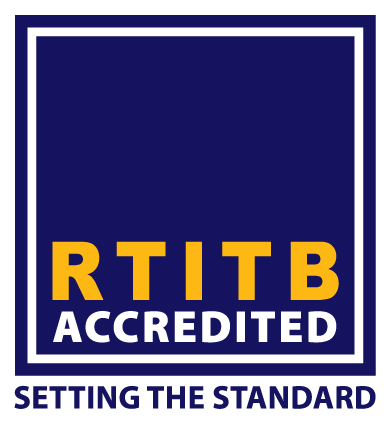Transitioning Your Fleet to Zero Emissions
Dated: 25 Aug, 2023

Here at Fleetmaster, we are committed to assisting in the transition of your fleet into the zero emissions goal. Back in November of 2020, the UK Government announced its plan to ban the sale of petrol and diesel vehicles from 2030. Although this may seem a fair way off, electric vehicles are in high demand currently, so you need to consider your plan to convert your fleet from diesel and petrol vehicles to Alternatively Fuelled Vehicles as soon as possible. A lot of this article will include electric vehicles as they are the large majority of alternatively fuelled vehicles that are out there. Below are some tips to help with the transition period, as well as the advantages and disadvantages Alternatively Fuelled Vehicles (AFVs) bring.

Do your research and create a plan.
When considering which alternatively fuelled vehicles you would like to replace your diesel/petrol vehicles, you need to look at what works best for your operations. Just because one vehicle works for one business, does not mean it will work for all businesses. You need to consider:
- How much mileage does a vehicle in your fleet complete on average per day. Then compare this to how many miles different alternatively fuelled vehicles can complete per charge/re-fuel. For example, the Vauxhall Vivaro-e can achieve a maximum of 205 miles per charge (as per WLTP testing). Whereas the smaller Vauxhall Combo-e will cover roughly 171 miles per charge (as per WLTP testing).
- How much equipment do you carry? Currently payloads for electric vehicles are lower than their diesel or petrol counterparts. Although the figures do not dramatically differ, you need to consider what equipment is absolutely necessary to be loaded into your vehicles, and then which electric or alternatively fuelled vehicles can carry that payload legally and safely.
- Once you have looked into which vehicles you would consider introducing into your fleet, do some further research, and even some testing if possible, to see what realistic range you will achieve with those vehicles. For example, keeping with the Vauxhall vehicles, the Vivaro-e will more realistically achieve 150-170 miles per charge when other variables are factored in, such as driving style, drive modes used, tyre conditions, road conditions, weather conditions, payload, etc. The Combo-e will realistically achieve around 130 miles. Again, these ranges can vary dependant on many variables, so factoring in how your fleet operates is key.
- Once you have decided on the vehicles to bring in to replace the diesel/petrol vehicles, you then need to look at a plan on how this will be implemented. As previously mentioned, demand for electric vehicles, especially vans, are very high at the moment as fleets transition to meet the zero emissions targets, so you need to act fast once you are happy with your chosen vehicles. 2030 may seem a long way into the future, but if you are looking at hundreds or thousands of vehicles to replace, you need to factor in vehicle swap over time, familiarising your drivers with the new vehicles, and also if the vehicle(s) you want is even available currently. Don’t allow yourself to get caught relying and waiting on manufacturers to meet your goals and deadlines as demand is very high.

Training your fleet
Once your vehicles are ordered, you also need to consider that the majority of your drivers may have never driven an electric or alternatively fuelled vehicle before, and most may have never even driven an automatic before. You need to ensure that your drivers are sufficiently trained and prepared to operate the new vehicles. They need to understand how to operate the controls, what the controls and drive modes do, how the maintenance differs to petrol/diesel vehicles, how to get the best out of the vehicles, what payload is possible in the new vehicle, how to charge/re-fuel the vehicle, and most importantly, how to operate the vehicle safely and legally.
Fleetmaster are here to help and offer various practical on-road courses, classroom courses and e-Learning courses to help familiarise your drivers with their new vehicle. We also deliver the 5 hour alternatively fuelled derogation training accredited by the NRI. This allows drivers with a category B licence to drive alternatively fuelled vehicles up to 4.25 tonnes, without requiring a licence upgrade.

Charging and or Re-fuelling
You also need to consider how your fleet will charge or re-fuel your chosen alternatively fuelled vehicles. Hydrogen vehicles currently do not have much infrastructure in place, with only 15 hydrogen filling stations as of figures shown 22 March 2023. Electric vehicles currently have a much more prominent infrastructure in place, with 45,737 charging points available in 26,805 charging locations as of writing this. Those numbers are much greater than the 8,365 diesel/petrol filling stations in the UK, however, you need to consider where the charge points are located compared to your fleet and how many charge points are at that location. Charge times are longer than just re-fuelling with petrol or diesel, so you need to do some research into what charging points are near you, how many there are and download apps such as Zap Map so you can view which charge points are functional and if they are currently being used by another person or not.
As previously mentioned, charging times are longer than simply re-fuelling a vehicle. Slow charging can for some models take 24 hours or more to charge from 0-100%, some fast chargers can take up to 12 hours to charge from 0-100% and rapid chargers will typically take 30-45 minutes to charge from 0-80%. So, make sure you research into how long your chosen vehicle will take to charge based on the charger being used, and how you can plan a charging schedule that works for your fleet.
You also need to make sure that the location you plan to re-charge at has the charger that you require. The majority of electric vehicles now use the Type 2 charger for slow/fast charging, and the CCS Combo charger for rapid charging. However, some vehicles such as Nissan still use the CHAdeMO charger, so make sure the charge points you are planning on using have the charger you need.
One great option if possible with your fleet, is to install chargers either at your drivers’ homes (if possible) or at your work sites. The ability to be able to charge the vehicle at home or at a workplace is a perfect way to ensure your electric vehicle is constantly topped up. This also removes the need to rely on the public charging infrastructure, which could be frustrating if you arrive at a charge point that has a queue to use, or is out of use.

Advantages and Disadvantages of Alternatively Fuelled Vehicles (AFVs)
There are advantages and disadvantages you will need to consider when researching, purchasing, implementing, and running alternatively fuelled vehicles. However, with technology ever improving, and the deadlines fast approaching, disadvantages are being eradicated constantly, so make sure you keep up to date with all options available to you.
Advantages
- Zero tailpipe emissions. Alternatively fuelled vehicles release zero tailpipe emissions, leading to less air pollution.
- They are virtually silent. Electric vehicles are almost silent, especially below 18mph, meaning there is less noise pollution.
- The overwhelming majority have automatic transmissions, leading to a comfortable one-foot driving experience.
- There are fewer moving parts, this means that the vehicles are more reliable with less parts to develop defects or require maintenance.
- Technology. With alternatively fuelled vehicles being new, naturally they are kitted out with the latest technology and safety/comfort features. Also as technology develops, the capabilities of electric vehicles will too, allowing for more range, higher payload and faster charging times.
- Charging at home or on site is easy, convenient and gives you piece of mind that you always have a charging option ready.
- Drivers can complete a 5 hour alternatively fuelled vehicle course which allows them to drive alternatively fuelled vehicles up to 4.25 tonnes with the new derogation changes that the UK government brought into place. This will help counteract some of the disadvantages we will cover as the larger vehicles will have a higher payload figure for those who fleets who can’t afford the drop in payload. It also means you can now look to source vehicles over 3.5 tonnes without having to upgrade your drivers’ licences, meaning that you have an option to bypass any long waiting lists for electric vehicles within the traditional category B driving licence weight. Fleetmaster can deliver this 5 hour alternatively fuelled vehicles course, which is accredited by the NRI, allowing your drivers who attend the course to drive up to 4.25 tonnes AFVs. The main points you need to remember with this is a driver must complete the full 5 hours course to be registered to drive AFVs up to 4.25 tonnes. It must be an alternatively fuelled vehicle up to 4.25 tonnes that is driven, the driver cannot drive a diesel or petrol up to 4.25 tonnes with this training, and it does not act as a licence upgrade for the driver to then drive Category C1 vehicles. The training must be completed through a recognised training provider and awarding body.
- We are here to help! We can offer various training such as practical on-road training, e-Learning courses, classroom courses and the 5 hour AFV derogation training, meaning you are not on your own when transitioning to zero emissions vehicles.
Disadvantages
- Payload compared to diesel/petrol. The payload that AFVs can carry is typically lower than that of their diesel and petrol counterparts. However, using the Vivaro electric as an example again, the electric version’s payload is only 232kg less than the 150hp L1 diesel version, and these figures are gradually closing the gap over time. So this may not be a disadvantage as time goes on.
- The range is lower than diesel/petrol. The number of miles you can do per full charge is lower than the diesel and petrol counterparts. Again, this is ever-improving as technology and understanding advances. For example, the Hyundai Kona electric is only roughly 100 miles behind its diesel counterpart in miles per charge/re-fuel. Admittedly, vans are a bit behind on this front, but the range is always increasing and as the benchmark for range increases, all models will need to keep pace leading to more options with sufficient range capabilities.
- They are virtually silent. Yes this was a positive, but also can be a negative. With electric vehicles being virtually silent, this means other road users may not hear you coming. This is particularly dangerous for vulnerable road users (such as pedestrians, cyclists and horse riders) as they may not see you coming and then on top of that they may not hear you coming too. Always observe your surroundings and other road users, especially in towns and cities where vulnerable road users could appear behind static objects. Safe speed choice is critical to ensure you can stop in time should another road user appear, the correct speed could save their life!
- Availability. Due to the mandates and bans on petrol and diesel vehicles being brought in by the government, demand for electric vehicles (particularly on the commercial side) are through the roof. This has led to waiting lists for electric vehicles as they are being sold as fast as they are being produced. This does seem to be stabilising now as waiting times are dropping, but when the next benchmark for an electric vehicle hits the market, you will need to get in quick to ensure you can add some to your fleet before you are stuck waiting.
- Rapid chargers are only effective up to 80%. When using a rapid charger, once your vehicle reaches around 80% of charge, the speed will revert to a trickle speed to protect the battery. This means that from 80% onwards it is pretty much charging at the speed a slow or fast charger would charge at, so although it may only take up to 45 minutes to get from 0% to 80%, you could be waiting a couple of hours just to go from 80% to 100%. So when rapid charging we would recommend just charging up to 80% to make the most of your time and money!
- Charging speed for electric vehicles. The charging speed for electric vehicles compared to just filling up a diesel or petrol is very noticeable. Rapid chargers are the quickest option for charging and even that can take up to 45 minutes to charge up to 80% dependant on the model and conditions. Although chargers are improving in speed, the infrastructure needs to be able to support this as the grid may not be able to support multiple 350kW chargers being used in one location.
- Infrastructure for electric vehicles. Tying into the above point, the infrastructure for chargers still needs to improve to fully replace how diesel and petrol pumps operate. Despite there being significantly more chargers available in the UK compared to filling stations, this does not mean that is the case in every area of the UK. With filling stations offering 4, 6, 8 and even more pump areas in their forecourts, many charging stations may just have the 2 chargers on offer. Tying this into the above point where it is taking significantly longer to charge electric vehicles compared to refilling a diesel/petrol, queues can begin to form for the use of a charger. This is why we would always recommend installing an app such as Zap Map where you can search for the closest chargers you need in your location, and even view updates on if the charger is live and working and if somebody is actively using it or not.
The main thing to take away from the advantages and disadvantages is that the advantages are there to stay. The disadvantages are things that can be worked on and improved or are already well on their way to matching – or even surpassing – traditional petrol and diesel vehicles.
If you would like to enquire or book some training to help prepare your fleet for its transition to zero emissions, contact us on 01924 416624 or email us at enquiries@fleetmastergroup.com.


















